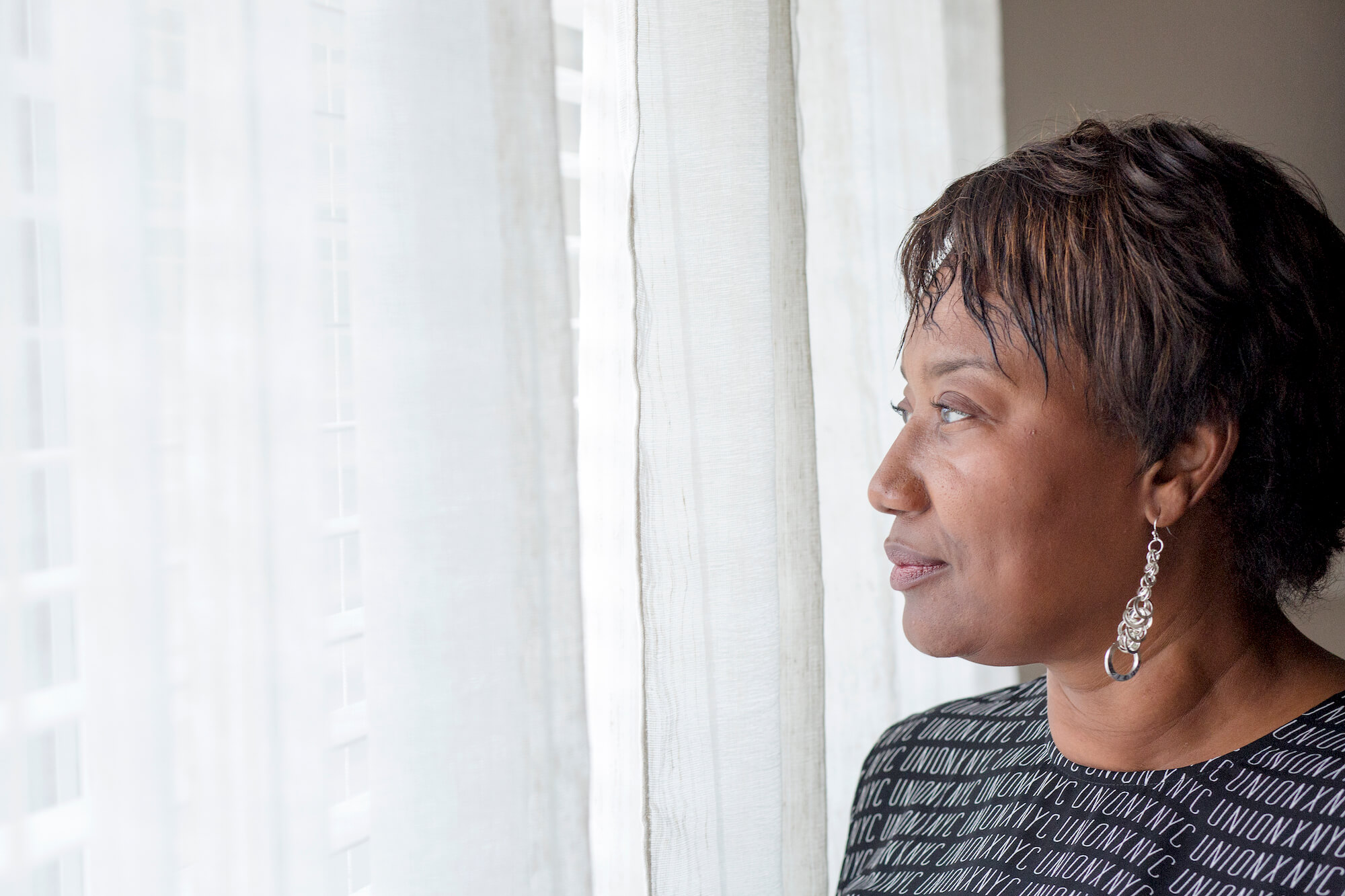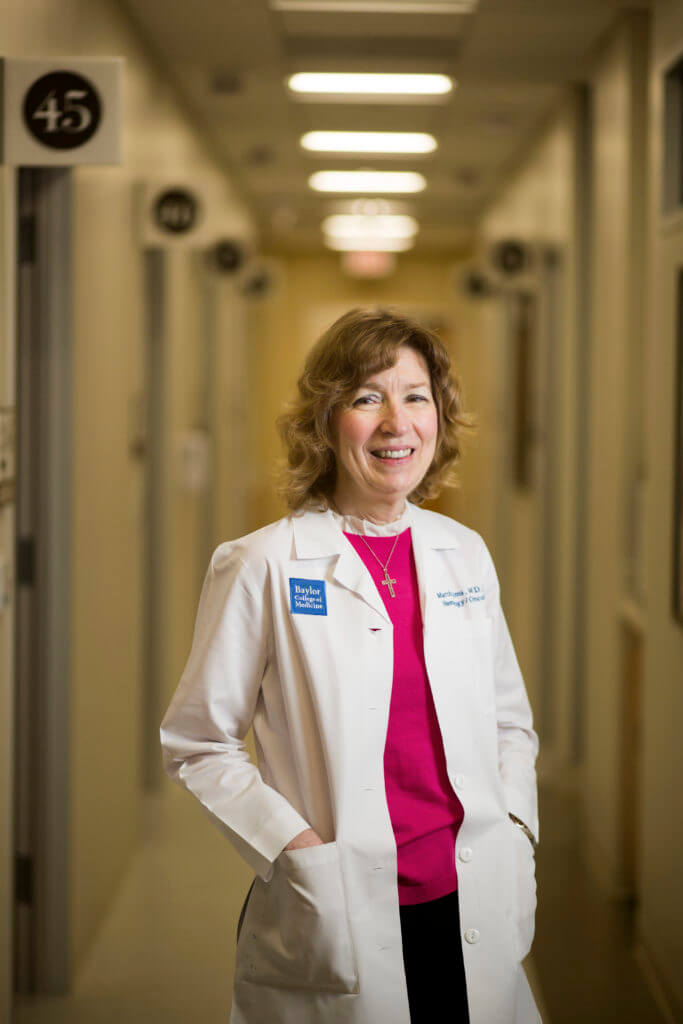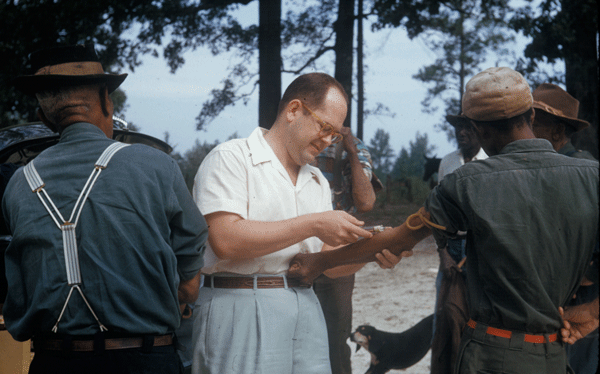Playing catch-up: diversity in clinical trials

Nearly two decades ago, Dominique Guinn enrolled her 4-year-old daughter in a clinical trial to treat the young girl’s severe atopic dermatitis.
When Guinn, who is African-American, told her uncle about the trial, he reminded her of the enduring stigma clinical research carries in the African-American population and the distrust many of its members—himself included—still harbor toward the medical system. He cited the infamous Tuskegee Syphilis Study, in which researchers intentionally withheld treatment from nearly 400 poor, African-American men with syphilis to track the progression of the disease and perform autopsies on the deceased without their informed consent.
“My uncle said to my daughter, ‘But you’re a guinea pig. They’re paying you and giving you incentive to participate in that stuff just to try this medicine out on you,’” said Guinn, a public health expert and visiting professor in the department of health and kinesiology at Texas Southern University.
Then, in 2016, Guinn developed acute lymphoblastic leukemia (ALL), an uncommon type of blood and bone marrow cancer. After being diagnosed with Philadelphia chromosome-positive (Ph+) ALL, a more aggressive form of the disease, she began treatment at The University of Texas MD Anderson Cancer Center under the care of Elias Jabbour, M.D., associate professor in the department of leukemia. Jabbour introduced her to a few clinical trials that were underway at the hospital, including one with ponatinib—a “wonder drug,” Guinn called it—approved to treat chronic myeloid leukemia and Ph+ ALL.
With Guinn’s consent, a clinical trial coordinator walked her, step-by-step, through the process and informed her of her rights as a patient along with potential risks and benefits, and the protocol for the study.
“I think it’s important that minorities know there are safeguards out there now to protect them in research,” Guinn said. “There needs to be a lot of education around the strides we have taken to correct those things and let people know there’s an internal review board that looks over all of this and the different practices within research, like informed consent.”
Disproportionately white
Twenty-five years ago, Congress passed the National Institutes of Health Revitalization Act of 1993, which compelled the federal agency to include women and minorities in clinical studies to promote clinical research equity. While gender participation has leveled off in recent years— gradually increasing from 40 percent female in 2015 to 55 percent in 2017—clinical trials continue to lack racial and ethnic diversity.
On average, participation in clinical trials is predominantly white. White patients constituted 79 percent of all participants in novel drug trials approved by the U.S. Food & Drug Administration (FDA) Center for Drug Evaluation and Research in 2016. Although individuals who are black or African-American alone make up 13.4 percent of the U.S. population, according to the U.S. Census Bureau, only 7 percent of clinical trial participants in 2016 fell into that category.
“When we test drugs in a patient population, we trust that population we test the drug in is going to mirror the patient population who ultimately receive treatment with the drug,” said Martha Mims, M.D., Ph.D., associate director of clinical research at the Dan L Duncan Comprehensive Cancer Center at Baylor College of Medicine. “When there’s skewing in the clinical trials population relative to the population of patients as a whole—patients who have access and need the drug—there are a lot of things that can happen.”
Understanding the safety and efficacy of drugs for all patients hinges on the participation of diverse racial and ethnic subgroups. One size does not fit all when it comes to drugs.
“Theoretically, we’re all biologically similar, so you could argue, ‘If nothing but white males participate in a particular study, and we learn that this new heart disease drug works in white males, it should work in Asian women, too, right?’ Theoretically, but no. There are biological differences. If Asian women aren’t participating in that trial, we’ve created a drug that really only works for white men,” said Lorna McNeill, Ph.D., associate professor and chair in the department of health disparities at The University of Texas MD Anderson Cancer Center. “Now we see the benefit of having everyone participate, but we caught on to that late. We’re trying to play catch-up by explaining to everyone: Your role is important for us to understand how different treatments and drugs might differ in different groups.”
In addition, a slew of potential side effects and toxicities of drugs may not be identified in certain populations if those races and ethnicities aren’t represented in clinical trials. It comes down to the pharmacogenomics: how an individual’s genetic makeup affects their response to drugs.
“It has a lot to do with the expression of particular enzymes that help us metabolize drugs,” Mims explained. “The way you metabolize aspirin versus the way I metabolize aspirin might be different.”
According to a study published in Clinical Pharmacology and Therapeutics in 2014, approximately 20 percent of new drugs on the market are metabolized differently across racial and ethnic subgroups and, as a result, are prescribed at different dosages based on race and ethnicity. Eltrombopag, which is used to treat thrombocytopenia (low platelets), is prescribed at a daily dose of 50 mg; however, patients of East Asian ancestry are only given half the dose due to an elevated risk of negative side effects.
Greater cancer risks in certain populations
The biology of cancer also plays a role in determining which treatments will work best among different groups of people.
“What drives tumor formation in the Caucasian population might be different than what drives tumor formation in the African- American or the Hispanic population,” Mims said. “The tumors might respond in a trial, but in actual fact, there might be very big groups of people who were underrepresented in the clinical trial and maybe their tumors don’t respond to treatment in the same way—not because the drug is metabolized differently, but because the driver of the disease might be different in different racial or ethnic populations.”

The paucity of minorities in clinical trials is particularly detrimental to the population of patients who are disproportionately affected by certain types of cancers.
For example, African-American men have higher morbidity and mortality rates for prostate cancer compared to white men. According to the National Cancer Institute, African-American men have a 15 percent chance of developing prostate cancer in their lifetimes, whereas white men have a 10 percent chance. In addition, African-American men are often diagnosed at a more aggressive stage of the disease, leading them to be twice as likely to die from the cancer as white men.
However, despite the increased risk for African-American men, clinical trials for prostate cancer skew heavily toward white men.
“If we want advances to work universally for everyone, or if we want drugs that are going to be slightly different for different populations, then everybody needs to participate,” McNeill said.
Although the FDA acknowledged that “medical products are safer and more effective for everyone when clinical research includes diverse populations,” there is no set quota for minority representation in the studies, according to FDA spokeswoman Gloria Sanchez-Contreras.
But increasing participation in clinical trials is easier said than done, as they require a greater level of commitment from patients than average clinical care.
“A lot of [my patients] have cancer and they want their cancer treated, but they can’t necessarily commit the amount of time and effort required to participate in a clinical trial,” Mims said. “Maybe their boss won’t give them the time off; maybe they don’t really have good, reliable transportation.”
In addition, the historical abuse of power carried out by medical researchers in gross violation of human rights inflicted deep wounds that are still healing to this day.
Tuskegee Syphilis Study
From 1932 to 1972, the U.S. Public Health Service conducted clinical trials on 600 poor African- American men in Alabama under the false pretense of providing free medical care from the government. In this group, 399 of the men had syphilis and 201 did not. Even after penicillin emerged as an effective cure for syphilis and became widely available in 1945, researchers deliberately withheld treatment from patients with the infection to observe the progression of the disease and perform autopsies on the men after their deaths.

On July 25, 1972, Associated Press reporter Jean Heller exposed the wrongdoings the researchers committed for four decades.
The public erupted in outrage, leading the U.S. Public Health Service to pull the plug on the study and issue a $10 million settlement after a class-action lawsuit was filed against the agency by the men and their relatives.
In the aftermath of the Tuskegee Syphilis Study, the federal government established legislation designed to protect vulnerable populations in human experimentation.
Congress passed the National Research Act of 1974 to institute regulations to govern and protect the rights of patients involved in human research studies. The new law established the National Commission for the Protection of Human Subjects of Biomedical and Behavioral Research to develop guidelines for more stringent oversight of human experimentation. These regulations include the Federal Policy for the Protection of Human Subjects, more commonly known as the “Common Rule,” which requires clinical research to be conducted with institutional review boards (IRBs), informed consent and assurances of compliance to protect clinical trial participants.
“We don’t think about the FAA [Federal Aviation Administration] when we get on an airplane, but we know the FAA is guarding our safety when we get [on board],” Mims said. “The same thing is true of clinical trials. We have our IRBs and protocol review committees designed to help protect the safety of the patient and the integrity of the research, but people don’t know that.”
Currently, 20 federal agencies—including the Department of Health and Human Services (HHS), the Department of Defense and NASA— abide by the Common Rule. Although the FDA is part of HHS, the agency established its own rules and regulations—separate from the Common Rule—for IRBs and informed consent to safeguard the rights, safety and welfare of patients.
A local approach
Both MD Anderson and Baylor College of Medicine have outreach programs dedicated to promoting more awareness and education around clinical trials to people in underserved communities.
At MD Anderson, McNeill spearheads Project CHURCH (Creating a Higher Understanding of Cancer Research and Community Health), a program designed to address health disparities in Houston’s African-American community.
When Project CHURCH launched in 2008, it began in partnership with 2,500 church members from three congregations in Houston’s Third Ward as a research study to better understand the socioeconomic, environmental and lifestyle factors that put African-Americans at higher risk for cancer. Through Project CHURCH and the Center for Community-Engaged Translational Research, McNeill and her team engage closely with the community in both research and education to break down invisible barriers and rebuild people’s trust in medicine. As a result of their efforts and ties to the community, they have been able to increase minority participation in clinical trials at MD Anderson.
“We wanted to take a more local approach with that. What’s going on in Houston? What might be placing African-Americans in Houston at greater risk for developing cancer? To do that, we believe in partnerships with communities, that we both come from answering these important questions from different strengths,” she said. “Essentially, we’re like a broker: We speak the language of community, and we speak the language of researchers, recognizing that they don’t speak each other’s languages.”
Across the street at the Dan L Duncan Comprehensive Cancer Center, Baylor officials recently announced a new partnership with the University of Houston to develop a joint cancer drug discovery, development and research education program to address the health disparities across racial and ethnic groups.
According to Mims, the participant demographics of Baylor’s clinical trials consistently reflect the demographics in Harris County due to their efforts to not only diversify participants in the studies, but the cancer research workforce, as well.
“Trying to overcome those racial and ethnic barriers with the people who approach you about clinical trials is important,” Mims said. “I try always to recruit people who mirror the patients I’m treating. I try to have people who speak Spanish and I try to have African-American people working with me, so they can relate to the patients and their lifestyles and cultures that might be a little different than mine.”
Ultimately, everyone should have access to good quality medical care, Mims said, and clinical trials are part of that.
Will to live
As part of Dominique Guinn’s clinical trial, she spent one week at the hospital for treatment, including ponatinib and lumbar punctures to inject the chemotherapy drugs directly into her spinal fluid. Over the three weeks following each monthly treatment, she would return to the hospital every Monday, Wednesday and Friday to visit the clinic and have her blood and lab work done. She repeated the treatment course for eight months with little improvement and severe side effects.

“For weeks at a time, I would just eat ice chips. I would feel like I was literally going crazy during those times I couldn’t eat,” Guinn said. “I was having gastric problems with it. It wasn’t easy tolerating the medicine, but I knew that my life depended on it.”
Guinn’s motivation, she said, was her will to live. She was determined to give ponatinib another try.
“I tell people about the wonder drug that saved my life. I wouldn’t be here without it,” Guinn said. “I spent the first few days asking myself, ‘Why me?’ But by the fourth or fifth day, I realized, ‘Why not me?’ I’m a strong person. I’ve been through a lot … and I felt like I can handle this and hopefully be an example for others.”

